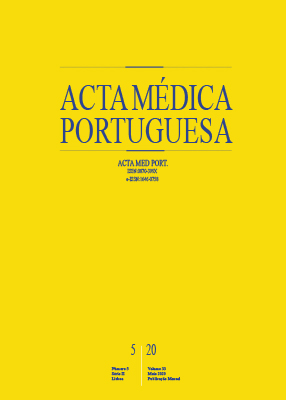Anterior Segment Optical Coherence Tomography in the Early Management of Microbial Keratitis: A Cross-Sectional Study
DOI:
https://doi.org/10.20344/amp.12663Keywords:
Corneal Ulcer, Eye Infections, Bacterial, Keratitis, Tomography, Optical CoherenceAbstract
Introduction: Infectious keratitis is an important cause of visual loss. The purpose of this study was to investigate anterior segment optical coherence tomography patterns in infectious keratitis and evaluate the role of this tool in the early management of this disorder.
Material and Methods: In this cross-sectional study, we included patients with proven infectious keratitis, either by culture or therapeutic trial. Subjects underwent baseline anterior segment optical coherence tomography (Spectralis® anterior segment module, Heidelberg Engineering, Germany) performed by the same operator. We used anterior segment optical coherence tomography vertical and horizontal raster default scans with 6.0 mm scan lines.
Results: Twenty-five patients (14 men and 11 women) were included. The most common risk factors identified were ocular trauma (11 cases) and contact lens wear (7 cases). Fifteen patients presented bacterial infection; three, fungal infection; two parasitic infection; and five cases presented a negative microbiological culture. Anterior segment optical coherence tomography depicted nine distinct morphological patterns.
Discussion: Anterior segment optical coherence tomography allows the depth of corneal involvement to be assessed. When the only patterns identified were hyperreflective stromal lesion and stromal edema, the visual outcome was better. Cystic spaces were present in severe bacterial keratitis.
Conclusion: Anterior segment optical coherence tomography can complement biomicroscopy, allowing for a better characterization of corneal involvement at presentation that can help in staging and providing useful prognostic information.
Downloads
Downloads
Published
How to Cite
Issue
Section
License
All the articles published in the AMP are open access and comply with the requirements of funding agencies or academic institutions. The AMP is governed by the terms of the Creative Commons ‘Attribution – Non-Commercial Use - (CC-BY-NC)’ license, regarding the use by third parties.
It is the author’s responsibility to obtain approval for the reproduction of figures, tables, etc. from other publications.
Upon acceptance of an article for publication, the authors will be asked to complete the ICMJE “Copyright Liability and Copyright Sharing Statement “(http://www.actamedicaportuguesa.com/info/AMP-NormasPublicacao.pdf) and the “Declaration of Potential Conflicts of Interest” (http:// www.icmje.org/conflicts-of-interest). An e-mail will be sent to the corresponding author to acknowledge receipt of the manuscript.
After publication, the authors are authorised to make their articles available in repositories of their institutions of origin, as long as they always mention where they were published and according to the Creative Commons license.









